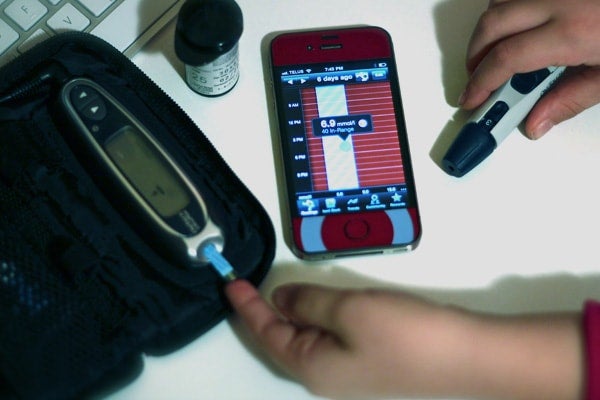
Meet Bant, a diabetes iPhone app
Published: October 25, 2011
Bant, a U of T-designed diabetes management iPhone application, made its formal debut recently at a University of Toronto mobile health symposium.
Mobile health, or mHealth, is a term used for the practice of medical and public health supported by mobile communication devices.
Professor Diane Doran (pictured below, right), scientific director of the U of T’s Nursing Health Services Research Unit NHSRU, led the Imagine the Possibilities of M-Health Technologies symposium to explore the relevance of mobile health care solutions for promoting safer patient care. The symposium featured health care clinicians and U of T researchers from nursing, medicine, engineering, human geography and computer science, as well as industry partners and researchers from other universities.

“It’s about the researcher and the industry partner working together to show how they’ve been innovative and collaborative in the context of research and give the participants an opportunity to hear about that,” said Doran. “We have some of the leading researchers here at U of T to really create some virtual laboratories where we can do this kind of research.”
Bant, named to pay homage to one of the famous U of T scientists who discovered insulin, Frederick Banting, was one of the new mobile applications featured at the symposium. Bant is an iPhone app designed to help adolescents with diabetes improve their self-management and blood glucose control.
Health-care providers often struggle with how best to optimize treatment for diabetes and improve diabetes self-management for patients. But with the massive popularity of smartphones and increased online access, this application makes it easier. The system was developed at U of T by Mark Cassellman, senior project manager at the Centre for Global eHealth Innovation and Professor Joseph Cafazzo, of medicine’s Department of Health Policy, Management and Evaluation and the Institute of Biomaterials and Biomedical Engineering.
Bant is different from current electronic logbook systems because it actively collects data wirelessly from a glucometer and uses prompts to help teens identify when changes in treatment may be needed. The application was designed directly with teens in mind.
“You can take measurements from your glucometer and the app will automatically know you’ve taken the measurement and it will log that,” said Cafazzo. “It will prompt you when it detects trends in your blood sugar that are problematic.”
“It gets the adolescent to start thinking about what’s happening and encourages positive behaviours by asking them to take measurements…if they have a lot of consecutive readings as they should, they will get a reward.”
The rewards, iTunes redemption codes, allow teens to buy other apps or music that appeal to them.
Some other examples of innovations developed by researchers and partners presented during the symposium included use of a pressure sensitive bed mat to monitor home care clients, hand hygiene sensory system linked to electronic badges and an intelligent cognitive device, COACH, to support health and wellness of older adults living at home.



